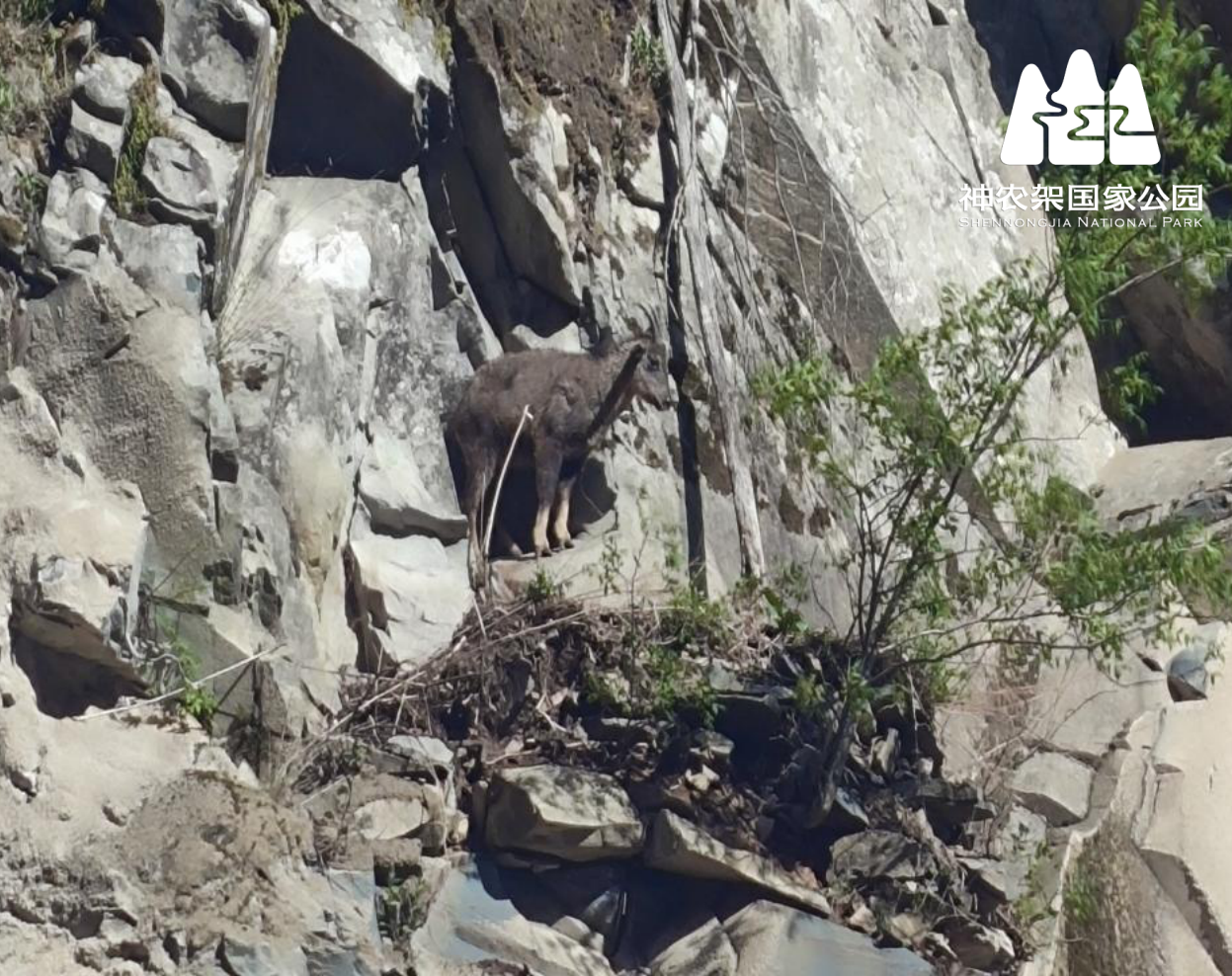Aerial Collaboration Builds a Lifeline: Successful Rescue of a Chinese Goral
Updated:2025-05-05 Source:Shennongjia National Park
On May 4, two observant tourists noticed a curled-up, seemingly injured "wild goat" on a cliff about 20 meters above the ground during their visit to Dajiuhu Wetland. They immediately reported it to the Dajiuhu Agency of the Administration of Shennongjia National Park. Experts later identified the animal as a Chinese goral, a rare and endangered species.

The Dajiuhu Agency quickly coordinated with experts from the Science Research Institute, staff from the Pingqian Management & Conservation Center, and the local police station to form a rescue team and devise a plan. The Science Research Institute dispatched specialists equipped with blowpipes and tranquilizers to the scene.
The rescue site posed significant challenges—steep cliffs, a 20-meter height, and limited accessibility. Approaching the goral directly was impossible; only ropes or aerial equipment could get rescuers close, and even then, tranquilizing the animal without causing it to fall was highly risky.
During the planning, one staff member mentioned that a local hotel was undergoing facade renovations and had aerial work vehicles on site. Acting on this information, the team quickly devised a strategy: deploy the aerial platform to reach the goral’s ledge, hoping it might board the platform or find its way back via the elevated path. If those failed, as a last resort, tranquilizers could be administered from 3–4 meters away—though the risk of the animal falling remained high. To mitigate this, soft materials were prepared and laid out on the ground as a precaution.
“I heard about the wild goat getting stuck, didn’t expect it to be a nationally protected animal! I have two aerial work vehicles available—use them however you need. I fully support rescuing a national treasure,” said Yao Changjin, general manager of Huaxu Hotel, who promptly arranged for an operator to assist.
With the aerial work vehicle in place, police temporarily closed the nearby road to traffic and pedestrians, while park staff cleared onlookers to avoid startling the goral. The rescue team laid out inflatable sleeping pads usually used for field patrols in case of a fall, and veterinarians prepared tranquilizers.

The rescue formally began. The platform was skillfully maneuvered to approach the cliff. As it neared, the goral grew anxious, glancing around and attempting to jump, dislodging stones and soil in the process. Tension ran high. Despite multiple careful attempts, the goral did not manage to step onto the platform or escape using it.
About ten minutes later, as the platform was repositioned, the goral suddenly gathered its courage and jumped along the escape path envisioned by the team. Unfortunately, the platform had moved and was no longer in place to help. The goral nearly landed safely, but a projecting rock surface obstructed its path, causing it to lose balance and slide.
At that critical moment, the goral’s "climber instincts" kicked in. While sliding, it twisted mid-air and made one final leap, landing precisely on another bulge about 4–5 meters below. However, the surface was too slick for it to regain footing, and the animal fell directly downward.
Thankfully, the height was reduced by about a quarter thanks to the intermediate ledge, and the goral landed head-up, rear-down—on the inflatable pad prepared in advance. These factors greatly cushioned the fall.
The moment it hit the ground, the goral immediately stood up amid the dust, didn’t pause, and sprinted along the roadside next to the cliff. After running for several seconds, it found a gentle slope and dashed into the forest, vanishing from sight. No abnormalities were observed in its movement.
“Wild animals typically have incredible physical resilience and strong bodies. In documentaries, snow leopards are often seen tumbling down steep cliffs while chasing bharal. Despite multiple falls and impacts with hard rocks, such incidents rarely cause fatal internal injuries—usually just surface wounds. Only under extreme conditions do serious injuries or fatalities occur,” noted a Science Research Institute expert at the scene.
The Chinese goral is a rare species native to China. It prefers natural mixed coniferous-broadleaf forests at altitudes between 1,200–2,500 meters and frequently moves through cliff areas. Due to habitat loss and human activity, its population is limited and it is listed as a Class II protected species in China. This successful rescue not only reflects the growing public awareness of ecological protection but also highlights the progress in biodiversity conservation and education efforts in Shennongjia. Deputy Director Huang Zeyan of the Dajiuhu Agency stated that efforts will continue to improve wildlife monitoring, public education, and emergency response systems to better protect these "nature spirits."(Reported by Yu Huiliang and Liu Jiaqi)
Address:36 Chulin Road, Muyu Town, Shennongjia Forestry District, Hubei Province 鄂ICP备18005077号-3
Phone:0719-3453368



